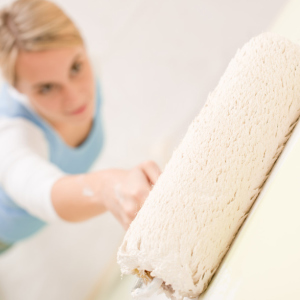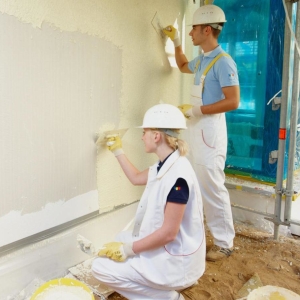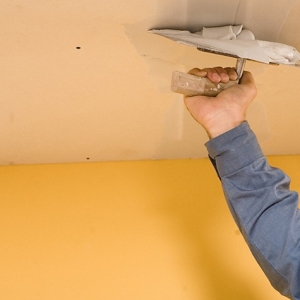Qualitatively performed putty - the key to successful repair. It is the putty to help smooth out the irregularities and disguise the defects of any reason, as well as prepare it for the finish decorative decoration.
On the shelves of modern building supermarkets, you can meet the putty of two types - ready for use and dry:- The pasty putty compositions, ready for use, are most often sold in plastic buckets and do not require special preparations for operation - before performing the shtclovation, it is sufficient to open the packaging container and mix the contents to a homogeneous state.
- Dry putty sold in paper bags or bags and are powdered bulk mixtures. Such formulations are diluted with water temperature to obtain a homogeneous plastic mass.

- First, the pure plastic container is filled with water, then it is covered with the desired amount of powder mixture.
- In the process of mixing the components, you can gradually glue dry putty and topping the water. "Right" solution should have a homogeneous viscous consistency.
- Experts recommend to knead a solution for shtcloth on small revolutions. The optimal tool speed is 600-700 revolutions per minute, with more high-speed mixing, the putty is overtaken by bubbles of oxygen, gives a significant shrinkage after drying and covered by "web" cracks.
- At the end of the primary mixing, the putty mass must flow 5-10 minutes. After that, repeat controls.
On a note! If you add a small amount of PVA glue into the diluted putty, then the mixture will become more elastic and militant.
- Before proceeding to breeding putty, carefully examine the proportions (the ratio of water and powder) specified in the manufacturer's instructions.
- We mix the putty in small portions so that it is enough for 30-40 minutes of work - after complete drying, the mixture loses its plastic properties and becomes absolutely unsuitable for use.
- Before each subsequent kneading, thoroughly clean the tool and the tank from the residues of the previously diluted spike mass.
- Consider that excess putty, assembled from a spatula / trowel or working surface in the level of alignment, cannot be returned to the container with the solution; It is better to add them separately and use cracks for sealing, elevated and other local flaws.
As you can see, the technology of breeding putty mixtures is quite simple, but it is not devoid of some nuances and subtleties. Subject to recommendations and simple rules, putty works will certainly be held at the highest level.




































